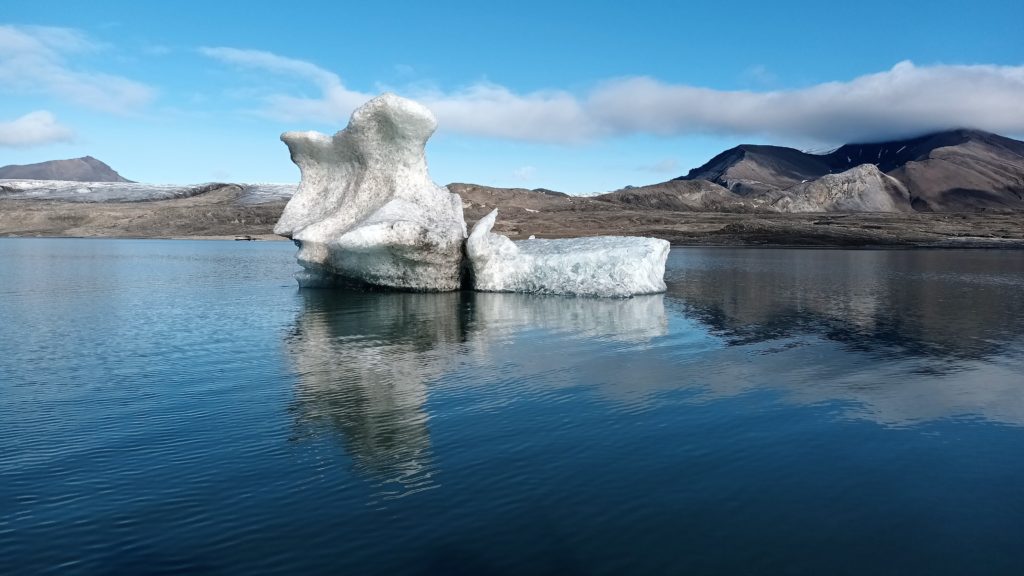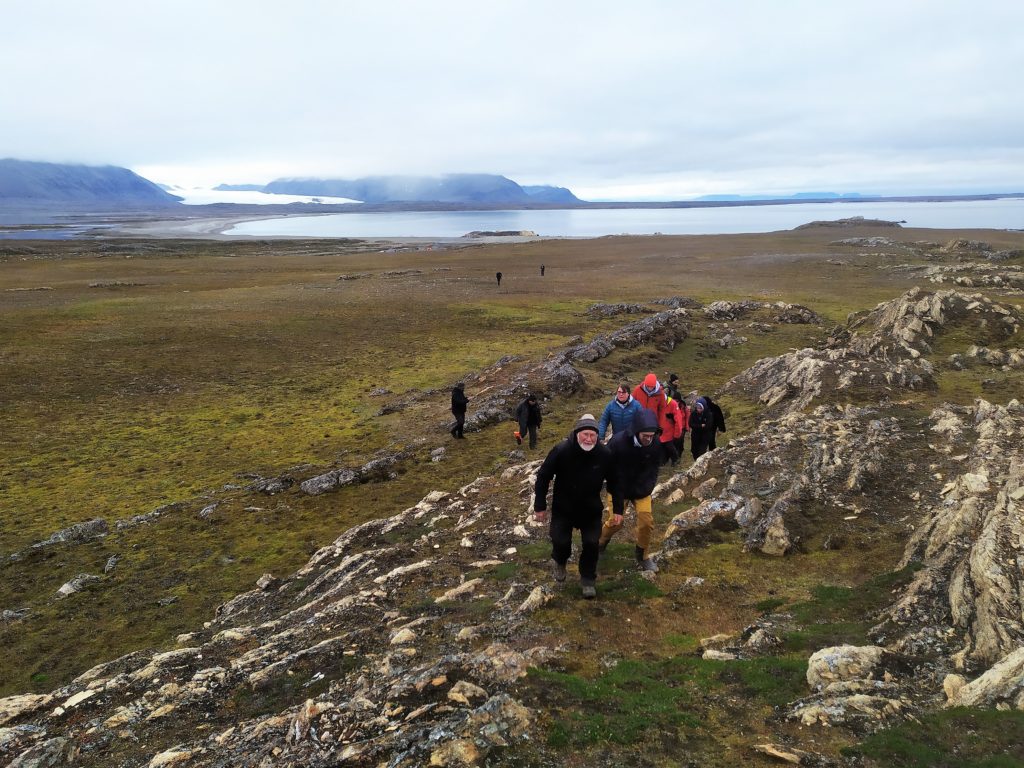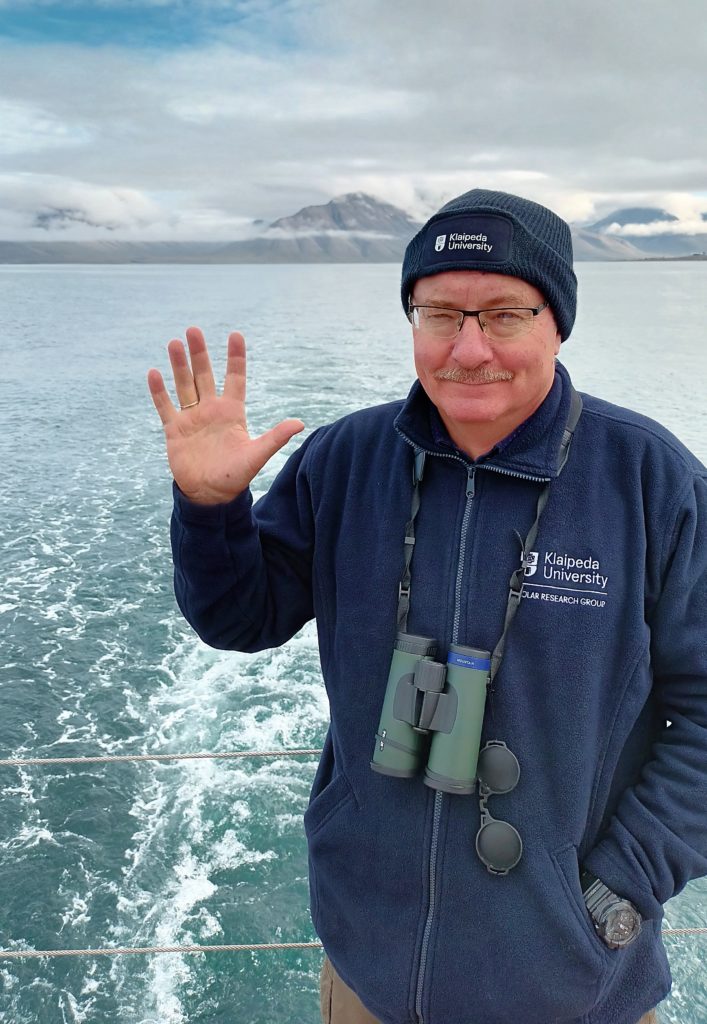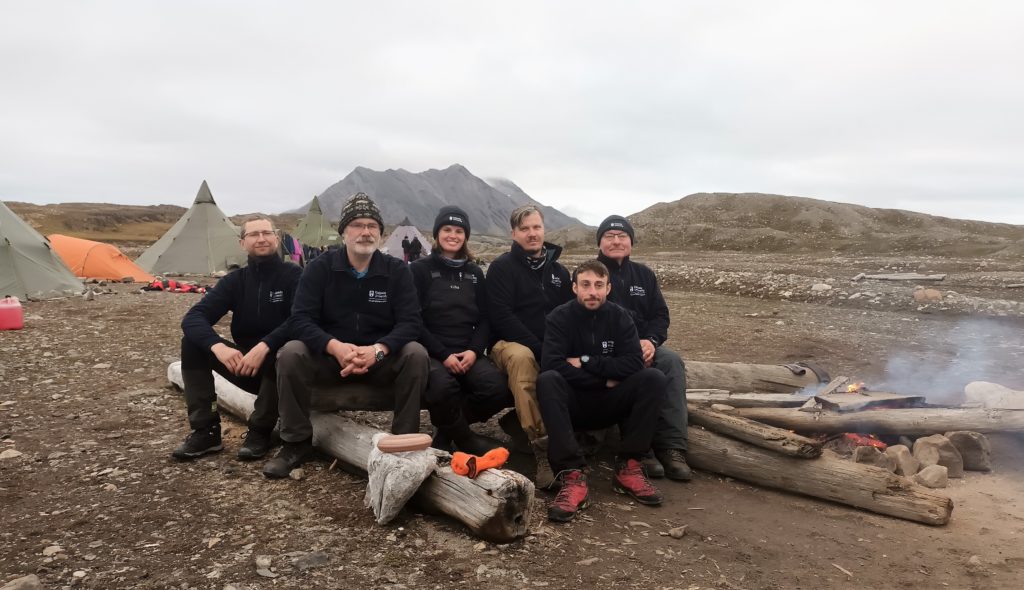KU Polar Research Team Completed the Third Expedition to a Newly Formed Arctic Lagoon
As glaciers in the Arctic continue to melt due to climate change, receding ice unveils new landscapes and environments that no one could access for millions of years. Nestled in between an arctic tundra and a glacier in Spitsbergen, Svalbard Arctic, the Eidembukta Lagoon is one of them.
In fact, this lagoon does not even have an official name yet. It was first discovered in 2019, when the research team of the Marine Research Institute of Klaipeda University was collecting samples nearby. But from that point on, the lagoon became a focus of their research for very specific purposes.
The 2023 expedition continued the detailed studies of the lagoon’s ecosystem that began last year. During the most recent exploration researchers carried out bathymetric surveys, hydrological and hydrochemical measurements. They also took samples of plankton, benthic fauna and environmental DNA not only in the lagoon itself, but also in nearby small lakes and in the sea to reveal connectivity between these water bodies. Furthermore, to better understand how greenhouse gases are released from the lagoon, researchers also carried out biogeochemical experiments.
According to the project leader Prof. Sergei Olenin, research professor in ecology and environmental studies at the Institute of Marine Research at Klaipeda University, observing the changes taking place in the Eidembukta Lagoon now can provide a better understanding of how the Baltic Sea ecosystem formed after the retreat of the glaciers about 10,000 years ago.
In a continuous effort to build on observations made during previous expeditions, this time the team consisted of 7 KU researchers: prof. Sergej Olenin, marine biologist dr. Andrius Šiaulys, hydrologist dr. Aleksej Šaškov, zoologist dr. Dzmitry Lukashanets, biogeochemist dr. Tobia Politi, and hydrologist-cartographer Greta Kilmonaitė. The research team stayed in a basecamp next to the lagoon from the 13th to the 20th of August. They were accompanied by international team comprised of scientists and students from the Institute of Oceanology of the Polish Academy of Sciences (IO PAN) and Gdańsk University of Technology and Umeå University (Sweden).
While the samples and data gathered during this expedition are still being processed in Klaipeda University’s Institute of Marine Research laboratories, it is already possible to state that novel and distinctive information has been gained regarding the structure and functions of this recently discovered and still developing periglacial ecosystem. The glacier was found to have drifted 30–50 meters further inland since last year, and a new depression approximately 40 meters deep—about 5 meters deeper than the previous year—had formed at its margin. Also, thankfully, there were no repercussions when the polar bear paid a visit to the researchers’ tent camp this year.
The Klaipeda University Polar Research Group is seeking collaboration with scientists from other EU-CONEXUS universities to continue studying emerging Arctic periglacial ecosystems.





